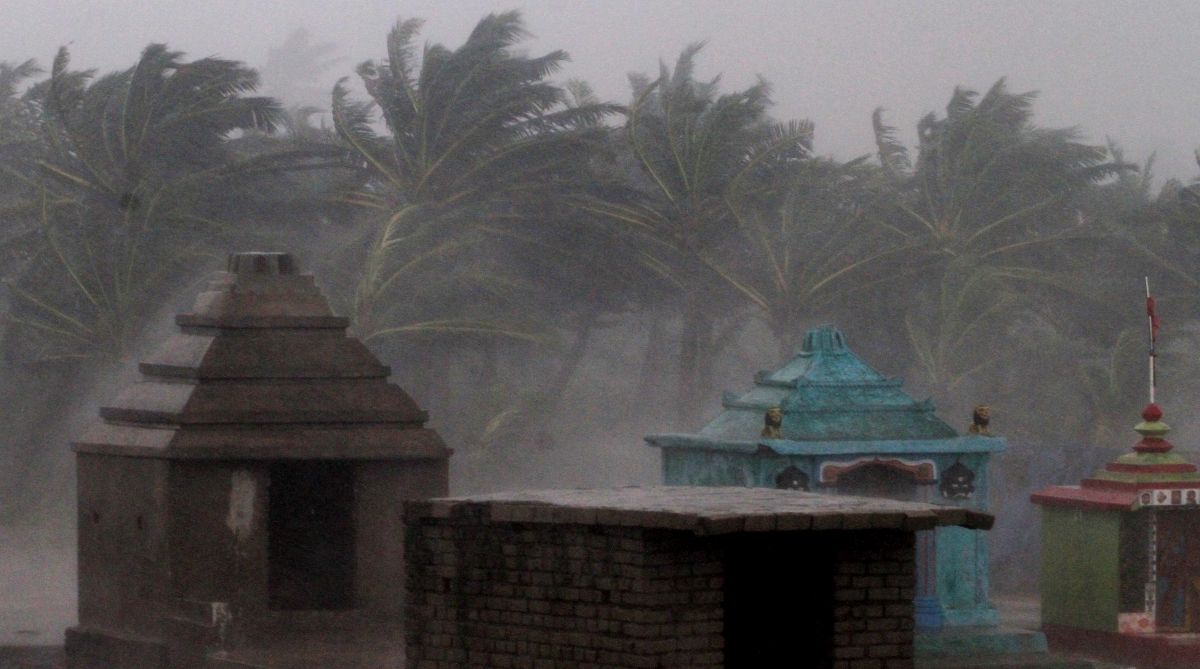Odisha’s tryst with cyclones has made people wary of the month of October.
Official records show that most of the super cyclones and very severe cyclonic storms in the Bay of Bengal have occurred during the month of October which has puzzled the people of the state.
Advertisement
The Odisha Super Cyclone, which devastated more than a dozen districts and killed almost 10,000 people in Jagatsinghpur district, had occurred on October 29, 1999. A list of 14 such calamities, chronicled between 1737 and 2014, shows that nine of the cyclones had occurred in the month of October.
A super cyclone had hit West Bengal coast from October 7-12, 1737 followed by a very severe cyclonic storm that killed around 50,000 people in Balasore district on October 31, 1831.
The only deviations from the ‘rule’ were recorded when very severe cyclonic storms or super cyclones hit Andhra Pradesh in different months: on November 1-2, 1864, between November 14-20, 1977, between May 4-11, 1990 and November 5-6, 1996. In between, a super cyclone had devastated Odisha on September 22, 1885 killing 5,000 people. But four of them happened close to the month of October.
After the 1999 super cyclone, Odisha faced very severe cyclonic storms thrice —‘Phailin’ in 2013, ‘Hud Hud’ in 2014, and the latest Titli, which occurred in the month of October on all three occasions.
The formation of a low-pressure area (LOPAR), which triggers the process and subsequently intensifies the system into a cyclonic storm, depends on the temperature of the sea surface, Dr Sarat Chandra Sahu, an expert on meteorology, said.
The temperature of the sea surface is the highest during October; he observed adding that the moisture content over the sea is high during the monsoon.
“The sea surface temperature has to be 26.5 degrees C to cause low pressure,” Dr Sahu, former Director of IMD in Bhubaneswar and presently Director of the Centre for Environment and Climate (CEC) at the SOA (Deemed to be University), said.
Explaining the process, he said if the sea surface temperature rose it would cause evaporation and warm moisture would facilitate the creation of a low-pressure area above the sea.
“If the temperature is 30 degrees C on the sea surface, it becomes minus 60 or 70 degrees C when it goes up releasing latent heat,” Dr Sahu said.
Another contributing factor to this is the phenomenon known as ‘wind shear’ which is sometimes referred to as ‘wind gradient.’ It is the difference in wind speed and/or direction over a relatively short distance in the atmosphere. The difference of wind speed is measured from a height of 1.5 km to 12 km and when the difference is less, it helps the cyclonic storm to gain strength.
Beware the ‘Ides of March’ was the soothsayer’s warning to Julius Caesar, in Odisha, it could well be beware the ‘Ides of October.’
The super cyclone of 1999, which ravaged coastal Odisha districts on 28-29 October, is indelible from the memories of people and October 29 is observed as National Disaster Mitigation Day. The super cyclone wiped out millions of trees and houses while over 10,000 people died.
Lessons were learned and Odisha government showed the way to the entire nation by setting up Odisha State Disaster Mitigation Authority (OSDMA), Odisha Disaster Rapid Action Force (ODRAF), training volunteers, equipping them with rubber boats, battery operated saws, communication systems et al. Doppler weather stations were set up for early warning and cyclone shelters were in place.
Results were visible as since 1999, every time a hurricane hit the state, the damage is minimal. Lakhs of people are shifted to cyclone shelters, school buildings etc. where generator sets and dry ration are stocked.











